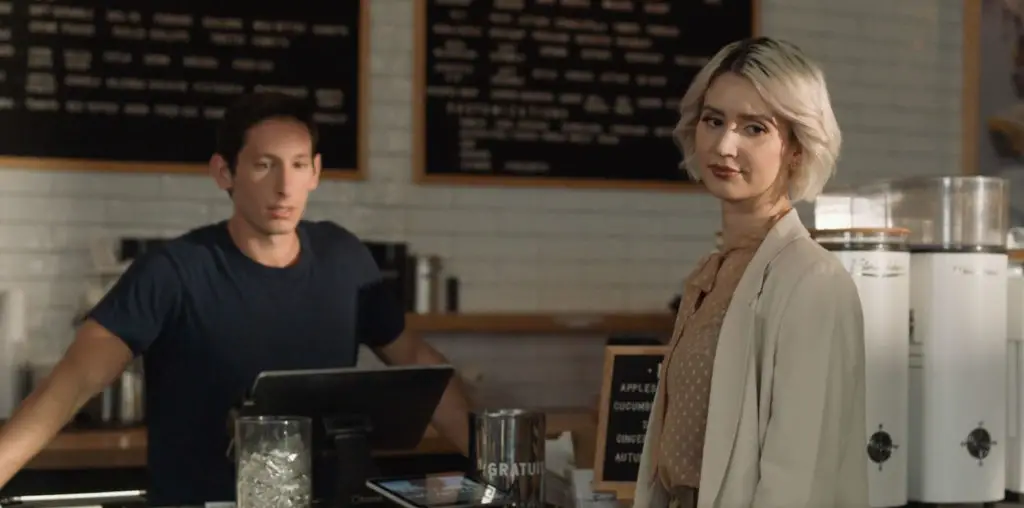
Many years before Judy Garland flew over the rainbow, the inhabitants of Oz were the focus of several silent movies. These films are barely known today, which is a shame on two levels: they are quite fascinating in their comedy-fantasy approaches to the Oz subject and several of them were helmed by L. Frank Baum, the man who invented the Oz universe.
This new DVD brings together four of the silent Oz flicks into a single package. The best of the quartet is easily the 1914 “His Majesty, the Scarecrow of Oz,” which was the only Oz-themed tale that Baum wrote directly for the screen. It is a wonderfully weird and funny adventure in which the Yellow Brick Roadsters find themselves involved in a crazy spin of socio-economic disparity, romance and sorcery. It seems that Princess Gloria is in love with the handsome gardener Pon, but her dad King Krewl wants her to marry the courtier Googly-Goo, whom she despises. So King Krewl employs the Wicked Witch to freeze Princess Gloria’s heart and turn Pon into a kangaroo.
As the title would suggest, the Scarecrow is the center of attention here. He gets involved in a lot of zany slapstick: he winds up falling to the bottom of a river (where a sexy mermaid visits him) and gets carried away by a huge crow, who deposits him on the ground and engages the silly straw man in a jolly dance number. The Wicked Witch is on the receiving end of a lot of physical knockabout: the Tin Woodsman decapitates her with his axe and the Wizard of Oz imprisons her in a large can. Dorothy and the Cowardly Lion have little to do, but no one seems to miss their input.
“The Patchwork Girl of Oz,” also from 1914, is the weirdest flick of the set. A boy named Ojo (played by a woman in male drag) and his uncle Nunkie run out of food, so they head off to Oz in search of a meal. They stop at the house of a wizard (not THE wizard) who is making a life-sized doll made from patches and rags. The doll (who wears a dress and has Rasta-style dreadlocks) is supposed to work as a servant, but she (it?) winds up spilling a potion that causes nearly everyone in the house to turn into stone. There is much mayhem to find the ingredients for a reverse potion, with the eponymous character encountering such weirdos as the one-legged Hoppers (men with their lower torsos in a large boot), the Tottenhots (a primitive spoof of African tribal warriors), and the Woozy (sort of a large square cat).
The Patchwork Girl is played by French acrobat Pierre Couderc, who does a lot of energetic tumbling but who never brings any charm to the part. Indeed, the film is frenetic and slapsticky in a Keystone style that makes it easy to assume Mack Sennett directed the film instead of Baum. It is often exhausting, but never boring.
Another 1914 Baum production, “The Magic Cloak of Oz,” is difficult to appreciate today since it only survives in a severely truncated version (two reels are lost and the extant footage runs about 40 minutes). What survives, however, is a charming tale of two orphaned children and their pet mule (played by a costumed Fred Woodward, who handled all of the animal roles in the Baum productions). They wind up in possession of a magic cloak which provides them with unexpected adventures and challenges. It is not really an Oz story (Baum based this on his novel “Queen Zizi of Ix”), but it is a pleasant fantasy with charming elements including a conversation with the Man in the Moon. But the lost footage creates an occasionally jerky continuity, and it is a great pity the original production is not extant.
The fourth film here is the 1925 feature “Wizard of Oz,” directed by and starring Larry Semon. It was an expensive and ambitious project designed to elevate Semon from the ranks of two-reel clown to major feature film star. Alas, Semon lacked the talents as a filmmaker and a comic actor to maintain a coherent feature and the film plays like a bunch of poorly-connected slapstick sequences stitched together with the barest thread of a plot.
This time around, a conspicuously mature Dorothy (played by Semon’s wife Dorothy Dwan) who is discovered to be the lost princess of Oz. It seemed Dorothy was abducted from her royal crib as an infant and deposited on a Kansas farm to save her from a palace coup. Through circumstances that are really to silly to detail here, she winds up in Oz along with two of her farmhand suitors (Semon and a young unknown actor named Oliver Hardy) plus a comic relief black farmhand (played by Spencer Bell under the demeaning pseudonym G. Howe Black).
“Wizard of Oz” shoves the Baum source aside to enable Semon’s pursuit of endless racial jokes, fat jokes, falling down gags, chases and a rescue by biplane. Yes, a biplane in Oz – don’t ask. The film, as you may imagine, did not make Semon a star (the distributor actually went broke before the film’s release and it was barely seen in its day). Of the four films here, this is the weakest of Oz.
The silent Oz films may not possess the devil-may-care insanity of the cult favorites “The Turkish Wizard of Oz” or “The Brazilian Wizard of Oz,” but they are full of strange surprises and they deserve to be discovered. To contract Elton John: Hello, Yellow Brick Road!
